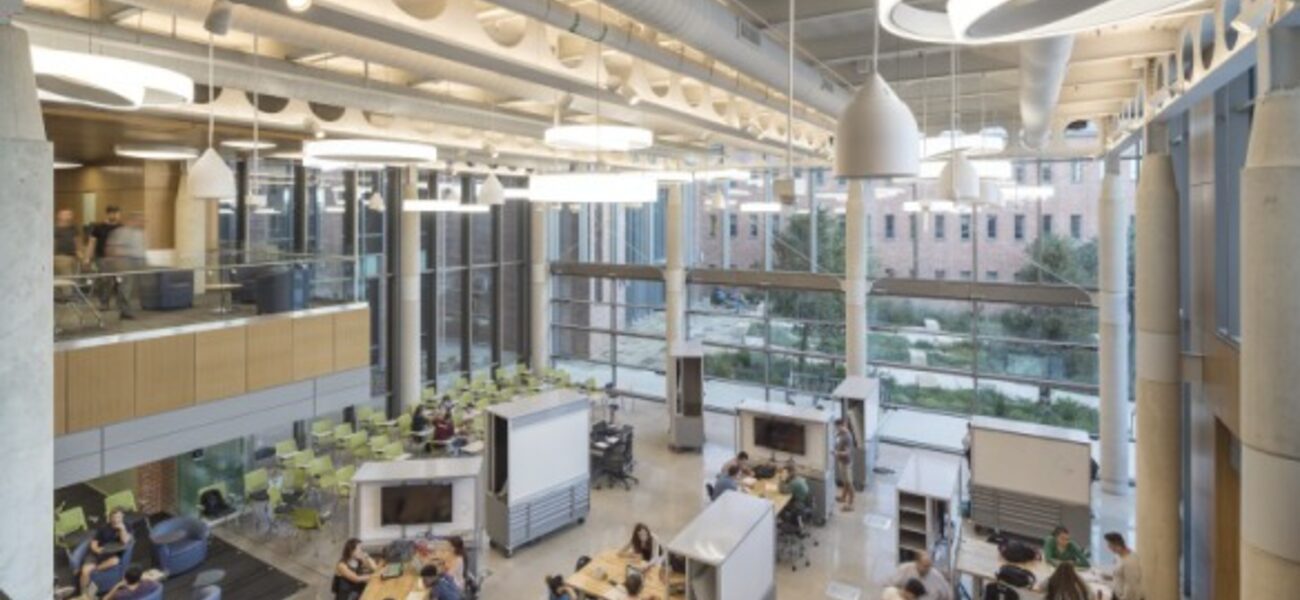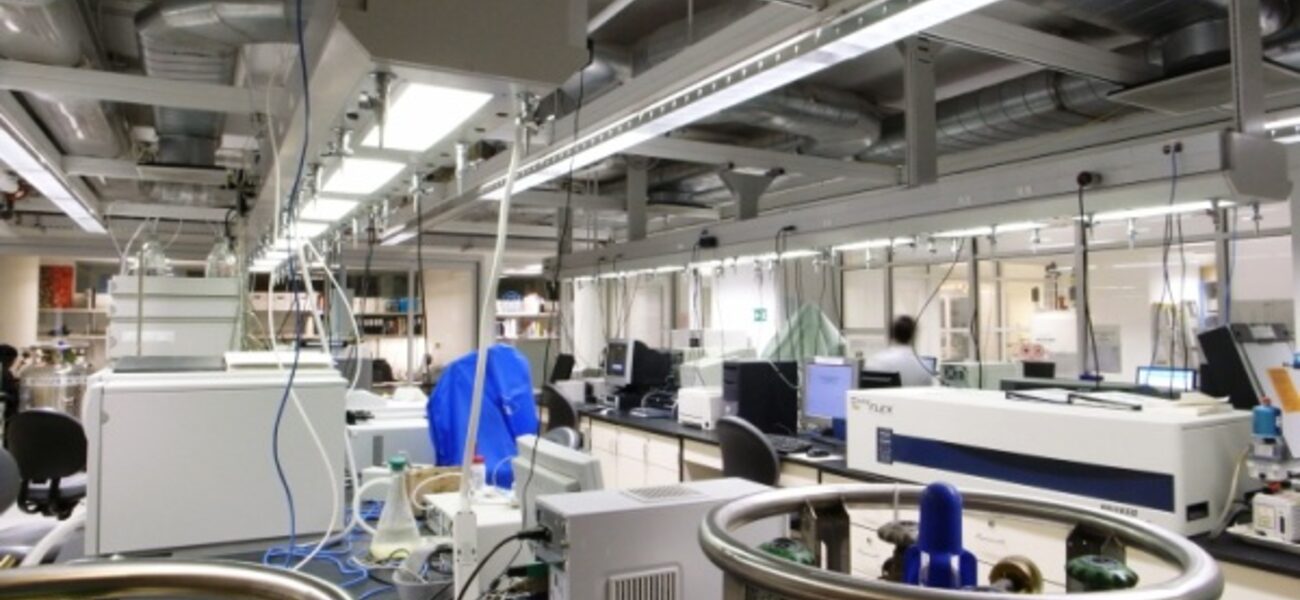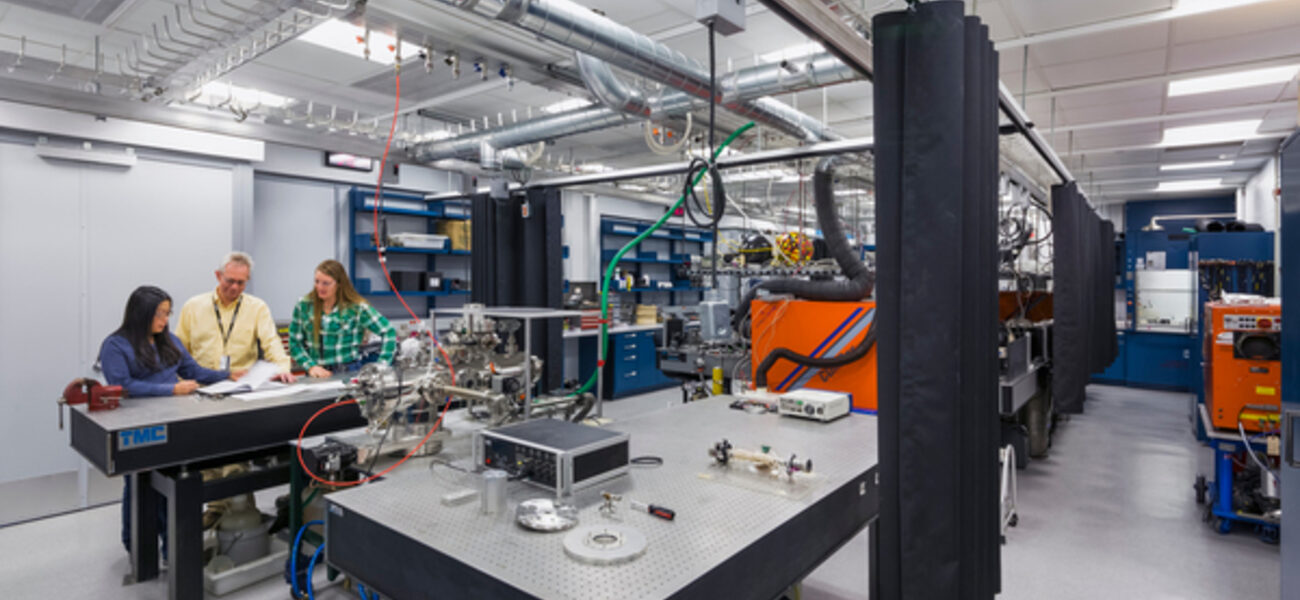Today’s scientific researchers are improving their productivity, research outcomes, and technological advances by using the knowledge of many disciplines. This emerging field of “convergence science” goes beyond traditional collaboration to the much larger intellectual intersection of engineering, physical sciences, life sciences, and other disciplines, plus big data. In this model, research includes funding from private sources or foundations that demand marketable results quickly. Therefore, the spaces that support convergence must be capable of rapid adaptation to respond to shifting research focuses.
What is Convergence?
In 2011, 12 MIT scientists published “The Third Revolution: The Convergence of the Life Sciences, Physical Sciences, and Engineering,” a white paper that gave concrete form to an emerging model of collaborative, interdisciplinary medical research with the potential to arrive at real answers faster and more efficiently. The researchers posited that this new paradigm “can yield critical advances in a broad array of sectors, from health care to energy, food, climate, and water.”
“This is really the innovation of all things,” says Jeffrey Schantz, sector leader for science and technology at EYP Architecture & Engineering in Boston. “It’s about taking what is happening across formerly disparate research disciplines and applying it in real ways.”
From an economic lens, the merging of big data and best practices for research and manufacturing is creating new opportunities for the growth of innovation clusters. These clusters tend to occur around universities, where there is a major investment in life sciences, engineering, energy, therapeutics, or applied sciences focused on economic development, making it possible to leverage the dynamics of convergence, economic growth, and urban planning and design.
“Researchers—and their employers—expect results in a shorter time, so what we are seeing in convergence science is a movement from the lab to real products, within a quicker life cycle,” says Schantz. “We need to design spaces that help people find their way through this launch cycle.”
The Transdisciplinary Approach: The Impacts of Technology
The current cycle of innovation is evolving beyond the era of computers, software, the internet, and biotechnology, into the realm of mobile devices, cloud computing, synthetic lifeforms, and molecular engineering.
“All of these techniques are driving innovation, and that demands a lot of integration,” says Schantz. “We are seeing teams moving the research as fast as possible into products and therapies, driven by economic development.”
Achieving a “quick-to-market,” integrated path to innovation requires moving away from silos, to a transdisciplinary approach, requiring teams comprised of experts from disciplines that typically do not share intellectual information.
Several clear trends are emerging that shape how researchers work together in a convergence model, and these trends are having a significant impact on the environments that support discovery. First, both the size and composition of research teams are changing rapidly, due to computational power, while the promise of quantum computing is reducing the size and energy consumption of supercomputing sites. “When you have that kind of computational power, the ability to experiment virtually, or prototype, and do a computational model before you ever experiment on something, is enormous,” says Schantz. “That is going to have a big impact on the way we design laboratories.”
In addition, a wider range of research diversity and expertise results in larger, more fluid collaborating teams that require less square footage per full-time equivalent. At the same time, bigger teams can also require larger core facilities to address the need for shared research technology, instrumentation, utilities, and other services. For example, in a multidisciplinary environment, an investigator might add a bioinformatics researcher from another department to his team. Convergence means that the bioinformaticist is more likely to be part of the team and would not have an office in another department.
Improved computational power, as well as increased automation, has also had an impact on wet-to-dry bench ratios in research environments. “We have noticed that dry space is growing, and wet space is shrinking,” says Christopher Baylow, project executive for higher education at EYP. “This trend effectively creates a ‘systems-of-systems’ analysis with greater reliability and repeatability of results.” Pervasive computation technology enables scientists to first digitally model and conduct experiments, increasing the level of predictability and success when they do go into the lab, saving time and funding dollars.
Size and mobility are two additional factors that will continue to shape the evolution of computational devices and research equipment. The increased mobility of technological instruments makes it possible for researchers to work outside the lab. Mobility is, of course, limited by size. Some aspects of convergence research require large equipment that uses strong magnetics, electron beams, imaging space, or nanofabrication. When designing for large-scale equipment, or even a building-as-instrument scenario, size and scale of certain critical tools requires researchers to work in the lab.
“Until we can replace in vivo research with something computational, we will need vivaria,” says Baylow. “High-precision imaging and characterization, fabrication, and assembly spaces will always be needed, because they are the places where we actually miniaturize things. Until we figure out how to make matter self-assemble, we will still be employing post-industrial processes to the making of products.”
Impact of Convergence on Facility Design
Attracting and retaining top scientific minds is an important investment for institutions. It sounds obvious, but a research organization’s most important asset is its people, its intellectual capital. This change in design thinking coincides with a shift away from government funding, which began in 2008 after the financial collapse. Once the blow of reduced federal funding was absorbed, many leading private and state universities positioned their research infrastructure as an economic growth engine. This was accomplished through closer collaboration with industry, state governments, and institutional partners, to attract private investment.
“This approach has worked out very well in states that have top universities that attract growth industries, like biotech, nanotech, agritech, and aerospace/defense,” says Schantz. “Collaboration with industry has been the primary vehicle for private investment in innovation clusters.”
What Does Design for Convergence Look Like?
EYP has identified three lab design modules that can accommodate convergence disciplines: maker model, innovation model, and life sciences model, all of which share the same idea of creating high-performance spaces for high-performance teams. The need to support researchers as they go from an idea to implementation and product delivery is prompting architects to reconsider their design strategies.
The maker model provides space to support a hands-on, collaborative work style and skill set that employers value. It supports the convergence of design engineering, invention, and entrepreneurship, and offers space that serves as an incubator and launch space, for solutions applied to complex problems.
The innovation model is an expanded version of the maker model, scaled for industry and real-world application. It is designed to put more sophisticated tools in the hands of researchers and engineers, with a broader focus on materials sciences, applied engineering, advanced fabrication, assembly, and product development.
The life sciences model is similar to the innovation model, but fine-tuned for therapeutic focus in biomedical applications, including drug development, devices, genomics, regenerative medicine, robotics, synthetic biology, and precision medicine.
“The metrics by which we have been planning laboratories for the last 25 years may no longer apply,” says Baylow. “We used to be driven almost completely in the life sciences by the NIH model of cost recoverables. How much money can we get in research funding? How efficient can we make the floorplate of a building? For institutions that now get funding from alternate sources, that thinking is no longer relevant.”
Now, it is more important to look at what research teams need to get the maximum results in the shortest amount of time with the smallest investment, rather than whether a researcher gets a corner office. The use of occupancy planning to determine the frequency of use, utilization rate, and mobility of the workforce is a key tool. The application of an occupancy metric requires data that is collected anonymously from actual in-use conditions to reflect the true usage pattern of space.
“Occupancy planning enhances innovation clusters where space tends to be at a premium or where capital investment is limited,” says Baylow. “It’s a way of maximizing an asset by increasing its availability through time management.” In a truly holistic approach to design for convergence science, understanding occupancy and utilization over time is the key to creating a successful research workplace.
By Tracy Carbasho


